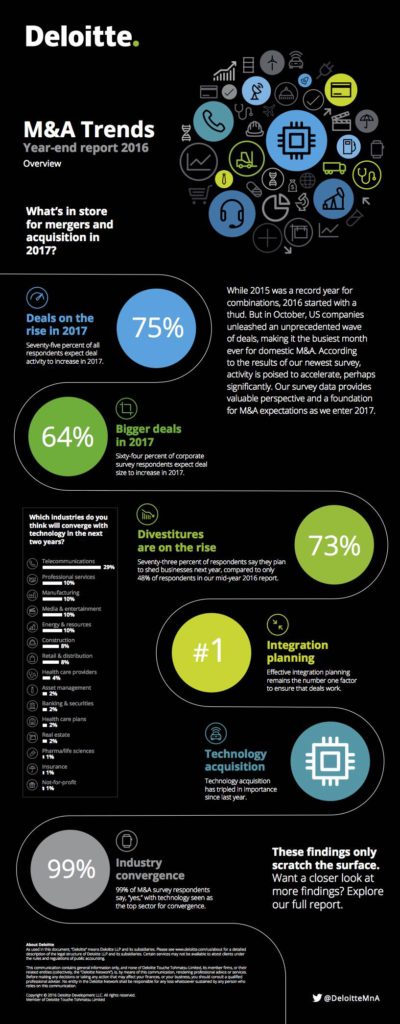Growth through acquisition is nothing new, and the end of 2016 showed a rising trend, with October 2016 being the busiest month ever for domestic M&A. As access to global markets increases the ability to find, assess, and buy technologies, companies that previously were not in the market to acquire are now finding it easier than ever to find new competitive advantages outside of their organization.
Successful acquisition is a complicated topic, but understanding an accurate view of the integration costs is core to any project regardless of size. If you’re not addressing the costs of shipping and logistics in your integration plan you may be missing a huge cost driver that could tip the scales in favor or against executing a potential acquisition.
M&A Shipping
So with all of the other costs associated with an acquisition, why am I focusing on shipping? Simply put, these costs are less conspicuous and harder to address than average because:
- M&A Shipping is cross-functional: If you are spinning up new offices, you need to furnish and setup new locations. If you’re changing your branding (or theirs), your marketing teams may need to pool resources. Your IT department may need to ship laptops, hardware, etc. The point is: shipping costs are out there.
- Access to new products means new shipping routes: Companies are usually great at understanding the “what” of a new acquisition (i.e. we’re getting this shiny new product); what they often fail to assess is the “how.” If your target acquisition manufactures product in China and usually ships to LA, but you’re located in New York, then your shipping costs may increase.
- The logistics process is often not centrally managed: HR, Finance, Facilities, IT – their costs and budgets are often determined separately, with little cross-functional analysis. This applies to M&A shipping and can result in your different departments taking their own approach (and potentially incurring increased costs).
- Speed is critical: taking years to integrate a new product line is unacceptable. Sometimes taking 6 months to integrate is unacceptable. And one of the greatest ways you can slow down your integration phase is to have critical equipment sitting in customs or waiting on a carrier.
So what can you do about it?
The short answer is to build a process in during due diligence. Whenever you begin putting your approach together you should be asking yourself several questions:
- Are we consolidating, moving or setting up new offices?
- How does the company currently handle freight shipping – do they have a preferred provider?
- Are we going to need to adjust shipping routes to send product to new locations?
- What kind of IT equipment may be needed, is the size material, and what is the timing?
- Are we consolidating or spinning up new data centers?
- Is significant signage needed by the marketing team?
If the results of this analysis come back in a limited fashion, then management by individual teams may still be the right approach. However, more often than not, you are going to find enough potential open areas that a larger M&A shipping approach is warranted.
Deploying a cross-business approach for M&A shipping
You already do this with other areas – consolidate similar requests to create efficiencies. So now do the same with shipping. A few options include:
- Engage your business unit leads – make sure that when teams are putting together their individual integration budgets that they are accounting for both the short term and long term costs of shipping. If you don’t see line items for this – question the data.
- Assign a single manager to reach out to your teams and ask for the details on the different types of shipping. You don’t need to get every request, just begin to understand the frequency and volume. Have them consolidate the information and begin to estimate monthly or quarterly spend.
- Create a SharePoint site that new shipment requests can be consolidated into. Have them provide details around the types of requests, frequency, and preferred method (air vs. sea).
Don’t be Afraid to Get some help
As you’re working through the above, it’s important to remember that there are supporting organizations out there that will help you manage the process. A proper Logistics Services Provider is going to analyze your spend, and determine the best methods and shipping providers to meet your needs. The benefits of such a provider can be significant, and they can especially help when you have ad hoc projects such as new acquisitions that require a quick ramp and ability to drive down costs.







